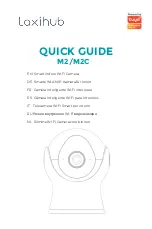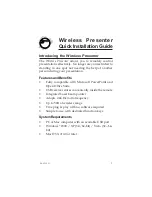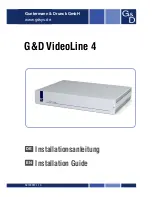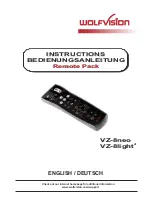
EN
107
Preca
utio
ns
a
nd
ca
re
in
str
uc
tio
ns
CARE INSTRUCTIONS
As any soiling also represents a growth medium for microorganisms, you
should take care to keep the equipment clean.
FOR THE CAMERA
•
Only clean the camera with a soft, dry cloth. Stubborn dirt should first of
all be covered with a well-thinned cleaning agent and then wiped off with
a dry cloth.
•
To remove stains and fingerprints, the camera and lens should be wiped
with a clean lint-free cloth. Tougher dirt in hard to reach corners of the
camera body can be removed with a small brush. The shutter blades may
not be touched when doing this.
•
All mechanically operated bearings and sliding surfaces on your camera
are lubricated. Please remember this if you will not be using the camera
for a long period of time. To prevent the lubrication points becoming
gummed up, the camera shutter should be released a number of times
every three months. It is also recommended that you repeatedly move
and use all other controls. The range and aperture setting dials on the
lens should also be moved periodically.
•
Take care not to scratch the sensor for the 6-bit coding in the bayonet
mount (see p. 81), or to get it dirty. Take care also that no grains of
sand or similar particles enter the fastening, where they could scratch
the bayonet. Only clean this component when dry and do not exert any
pressure on the glass cover.
FOR LENSES
•
Normally, a soft hair brush is sufficient to remove dust from the outer
lens elements. However, in case of more stubborn dirt, they can be
carefully cleaned with a very clean, soft cloth that is completely free of
foreign matter, using circular motions from the inside to the outside. We
recommend micro-fiber cloths (available from photographic and optical
specialists) that are stored in a protective container and can be washed
at temperatures of up to 40°C/104°F (without fabric softener, never
iron!). Cloths for cleaning glasses, which are impregnated with chemicals,
should not be used as they can damage the lens glass.
•
Take care not to scratch the 6-bit coding in the bayonet mount, or to get
it dirty. Take care also that no grains of sand or similar particles enter the
fastening, where they could scratch the bayonet. Never wet this
component when cleaning it!
•
The bayonet is given an ultra-thin film of grease in the factory to ensure
that the lens can be changed easily, gently and smoothly. In normal use,
this is retained for many years even if the bayonet is occasionally wiped
with a clean cloth. If a substance that dissolves grease is used for
cleaning, the grease film must subsequently be replaced. To do this, coat
the bayonet with a tiny amount of Vaseline with a finger and spread using
a clean cloth.
Important:
Make sure that the bayonet is not excessively lubricated with grease and
particularly that the area of the lens identification is clear, as grease residue
can accumulate in the gap and collect further dirt. This could impair the
legibility of the code and thus restrict camera functions on digital M models.
Summary of Contents for M Edition 60
Page 1: ...Leica M Edition 60 Anleitung Instructions ...
Page 2: ...12 14 13 1 2 3 4 11a 5a 5b 5c 11 15 18 6 7 8 5 9 10 15 16 19c 19b 19a ...
Page 3: ...26 19 23 24 25 21 22 ...
Page 4: ......
Page 5: ...Leica M Edition 60 Anleitung ...
Page 7: ...DE 3 ...
Page 20: ...DE 16 Vorbereitungen Bodendeckel schließen 1 2 3 4 ...
Page 27: ...DE 23 Kamera Bedienung ...
Page 53: ...DE 49 Fehlfunktionen und ihre Behebung ...
Page 54: ...DE 50 Anhang ANHANG DIE ANZEIGEN IM SUCHER 1 2 3 ...
Page 67: ...Leica M Edition 60 Instructions ...
Page 82: ...EN 80 Preparations Close the bottom cover 1 2 3 4 ...
Page 89: ...EN 87 Camera operation ...
Page 115: ...EN 113 Malfunctions and their resolution ...
Page 116: ...EN 114 Appendix APPENDIX DISPLAYS IN THE VIEWFINDER 1 2 3 ...
Page 129: ...Leica M Edition 60 取扱説明書 ...
Page 131: ...JP 131 ...
Page 144: ...JP 144 底蓋を閉じる ...
Page 151: ...JP 151 カメラの操作 ...
Page 177: ...JP 177 トラブルシューティング ...
Page 178: ...JP 178 資料 ビューファインダー搭載ディスプレイ 1 2 3 ...
















































